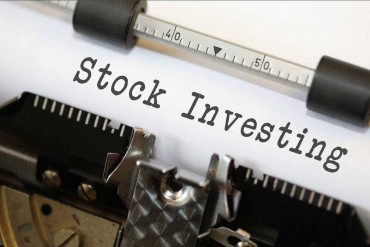
Before you start with asset allocation you have to choose what kind of investor you want to be. How do you see yourselves, like conservative, moderate or even aggressive investors?
For any investor, filling the investment portfolio with a proper mix of stocks, bonds, cash, real estate, and other investments is critical to financial well-being. This mix is known as “asset allocation.” The tricky part is that you cannot find a unique one that could suit all. Every investor must find own based on risk tolerance, timeline, and financial goals.
But even if you already defined what assets you want in your portfolio, it is still easy to get lost. Well, you want to optimize your portfolios, but you are gathering news every minute. And you are changing your decisions based on them. So, the consequence is that is more likely you have some “confused” portfolio, an assemblage of everything instead of a well-diversified portfolio.
Your portfolio has to be built with the goal of delivering income.
The asset management landscape is changing
First of all, In 2020 we can expect a huge rise in assets. It is predictable that economies in, let’s say, Asia, Middle East or Africa will grow faster than in areas with developed economies.
Extension in assets will be driven by several trends. One of them is the increase of wealthy individuals in those areas. So, we can expect the asset management landscape in 2020 will be changed. What investors have to do? Investors have to adjust their portfolios to new circumstances.
The investors should consider what caused an unusual change of growth and returns last year. Will the same conditions continue into this year? Will global economic growth returning to the trend? What about trade tensions? Is it over? All of this must influence investors’ decisions when building the investment portfolio and asset allocation.
The effect of asset allocation
The purpose of diversification is to avoid extremes. Asset allocation has to provide investors to score high returns, reduce volatility, protect them to have significantly lost capital.
You can accomplish this by asset allocation. All you have to do is to divide your investments into different classes of assets. Spread it into stocks, bonds, real estate, and cash. They will act separately from each other and your investment will be protected. Of course, you can spread your investment into cryptocurrencies, gold, commodities, or something else. Asset classes can be further divided into several sub-sectors.
Asset allocation is extremely important. Some studies reveal that asset allocation has a tremendous contribution to a portfolio’s overall returns. Even bigger than individual stock pick. Economists Paul Kaplan and Roger Ibbotson wrote that more than 90% of a portfolio’s long-term returns were generated by asset allocation. So, asset allocation has an important role in long-term returns.
How to start?
The first important step is to determine the target return. The issue is simply – by how much your portfolio has to grow to match your financial goals. But think about another issue too – what is your risk tolerance. How much risk are you able to take to gain a higher return?
You have to do all of this before choosing the investment strategy. If you are a buy-and-hold type you’ll be able to allow a higher level of risk. You will have periods with lower returns but they will be substituted with periods of higher-than-expected returns. So, it’s easy when you are an investor with a long horizon. But if you are not, if your time horizon is shorter, you’ll favor a lower risk portfolio.
Conservative Investing
Conservative investors tend to hold bonds. Their portfolios consist of 60%-80% in bonds of different maturity dates, different issuers. Well, bonds are not without risk, to be honest. Over the past few years, interest rates are rising and it causes bond prices to fall. The bond market can crash as well as the stock market. Do you remember 1979/1980? By some calculations, investors had losses more than $400 billion in total.
For example, baby boomers. They are inclining to conservative asset allocation. Their portfolios consist of over 70% in bonds. They control about 65% of all bond assets, by the way.
Modern asset allocation
There is something named modern portfolio theory and consequently, modern methods of asset allocation. This means a huge range of asset classes and sub-asset classes into portfolios.
At its core, modern portfolio theory is all about diversifying your asset allocation.
Modern portfolio theory is assumed to help reduce return risk by diversifying into many assets. But the first assumption of this theory is that asset classes are not in correlation. The point is to look at your investment as component parts of a whole. To be more clear, if one asset drops, the other will jump. It is just like a permanent zig-zag. Each investment is a moving gear. According to this theory, investors should balance a potential risk and returns but in the manner on how they might influence the risk and returns of the overall portfolio.
Start investing
Yes, you can do that, you can turn plans into dollars.
Just create portfolios to maximize the anticipated return based on an acceptable level of risk.
Don’t time the market. You have to look at your investment in the long term since the time in the market is very important. Do not let violent fluctuations or volatility disturb you. You are investing with your goal in mind.
Yes, you are more satisfied with less risk and nervous with grown risk. Moreover, you prefer the portfolio with the least risk, but one with the highest return possible and with the lowest risk.
Modern portfolio theory asserts that the risk for individual stock returns has two components: systematic and unsystematic risk. Systematic risk is the market risk and you cannot avoid it. For example, recessions, interest rates, wars are that kind of risk. The unsystematic risk is specific to individual stocks. Management changes, lessening the company’s operations, and similar, are unsystematic risks. You can lower this type of risk if you have a well-diversified portfolio and good asset allocation.
Proper portfolio building is difficult. It isn’t easy.
Asset allocation is portfolio diversification
The goal of asset allocation is to maximize the returns of a portfolio and reduce the risks.
Stocks will give you strong returns over a long time but they are volatile and inclined to periods ups and downs. But the combination of national and foreign stocks is healthy because sometimes one country is overvalued while another country is undervalued.
There are two main approaches to asset allocation.
Strategic Asset Allocation
Tactical Asset Allocation
Strategic asset allocation indicates holding a passive diversified portfolio. Meaning, you will not change your asset allocations based on market conditions. You will hold, add money and re-balance.
If you choose this strategy, you have to build a diversified portfolio of index funds or ETFs. From time to time you’ll re balance it. For example, when one asset class is increasing and another is decreasing in price. All you have to do in order to maintain the same weighting is to sell the increasing one and buy the underperformed assets.
Tactical asset allocation is complex and relates to almost permanent adjusting your weightings to different asset classes. You have to recognize where good risk/reward ratios are in the market.
The benefit is that you can really reduce volatility and increase returns. Though it’s more tending to individual failure, and if you do it badly you will decrease your returns.
Bottom line
Everyone would ask what’s the best asset allocation for a certain age? Here is one simple way to calculate it.
Subtract your age from 100 – that’s the percentage you should keep in stocks. For example, if you’re 40, you should hold 60% of your portfolio in stocks. If you’re 80, you should hold 40% of your portfolio in stocks.
But some advisors would recommend you to subtract your age from 110 or even 120 since people are living longer and longer.
When you choose what kind of investor you want to be whether conservative, moderate or even aggressive, it is time to focus on the asset allocation method. Spread it into allocations over particular investment categories: large, mid, small, and foreign stocks.
Balanced asset allocation in your portfolio is the right way to become a successful investor.







 Building a diversified stock portfolio is just the beginning but an important part of investing. Here is how to do that.
Building a diversified stock portfolio is just the beginning but an important part of investing. Here is how to do that.